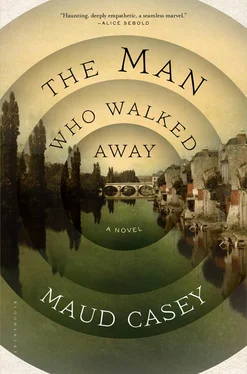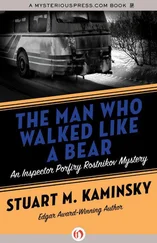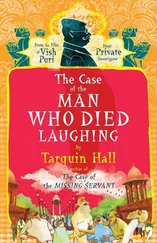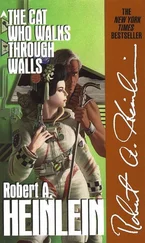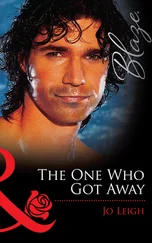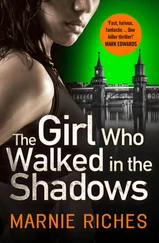“Buckle me,” the girl says again, her back to the hairy bear, the pieces of her life that added up to this moment hovering all around her. What if things had gone differently? the Doctor wonders. What if the father the Doctor has imagined for her hadn’t died in a factory accident, if her brothers hadn’t run off to create trouble with their blue hands, if their mother hadn’t fallen into such despair that the asylum seemed like a place to rest and to find a meal? What if the rosy, plump girl hadn’t followed her mother, and there been discovered by the great doctor? What if instead she lived the kind of life in which she might be asking to be buttoned into a lovely dress? Button me.
In the slow shuffle out of the amphitheater, the Doctor is surrounded by the cluck-clucking of the high foreheads and the aristocratic noses.
“The girls will be running the place soon.”
“I wouldn’t mind seeing that.”
“You just did.”
“What about the photographer?”
“What about him? He’s through.”
What about the photographer? Those long thin legs, the outraged look on his face as though it were the great doctor who had interrupted him , as though it were he, the photographer, who held the secrets. When the Doctor stops in the shabby bar next door to his shabby hotel to escape the cluck-clucking of the high foreheads and aristocratic noses, the photographer is so present in the Doctor’s thoughts that when he sees him in the corner nursing a drink with his bandaged hand, it is as though the Doctor has caused him to appear.
“May I join you?” the Doctor says.
“Plenty of other seats,” the photographer says, gesturing to the rest of the bar, which is empty except for the bartender, a man reading at the bar, and two men playing cards in the corner. “But do whatever you like.”
“I was just there,” says the Doctor, taking a seat. “At the amphitheater.”
“So you’re a doctor, then?” The photographer slides the glasses perched on the top of his pointy dome down onto his nose and looks the Doctor up and down. “A man of mental medicine?”
“I’ve seen your portraits in the journals.” The Doctor knows the way flattery can work on a man and he sees the way his words work on the photographer. He wants to win the man over, but he means it. In each of the portraits, there is a question on the girl’s face similar to the question on the girl’s face tonight, not unlike the question he has seen on Albert’s face. The look of a feral child subdued, as if someone has turned a crank at the back of the girl’s head one more notch and there it is, a different kind of smile. Not the smile of recognition — there I am in the mirror — so much as there someone is. Before one could mind manners, there had to be a lesson in what manners were. Here, try them on, like clothes. The smile is an offering and a question. Is this her, the girl you want ? Careless man. The Doctor was a careless man. Albert’s story of being mistaken for a nihilist assassin of the czar? Is this him, the man you want ?
“Why take pictures of these people? Why not let them be? That’s what my wife says,” the photographer says. “It takes three seconds for me to switch the plates. What anyone might discover if they were paying attention is those girls hold their poses long enough for me to photograph them. They perform in sync with the speed of the shutter. They wait for me to press the bulb. It’s not proof of any invisible lesion I’m capturing. But you don’t want to know. Or you don’t care.”
“They are not my theories,” the Doctor says. He hears his defensive tone and tries to soften his voice. “I do want to know. You cannot claim to have really seen something until you have photographed it, he said. I’m interested to know what you think that means.”
The photographer finishes his beer before he speaks. “I recently went to a demonstration,” he says finally. “A scientist used a volta-faradaic apparatus to isolate muscles in the woman’s face. The muscle for fear, the muscle for sadness, and so on.”
“Yes,” the Doctor says, “I’ve seen that demonstration. The woman’s spirit, enacted in her anatomy, that’s how the scientist described it.”
“ That’s what photography can do,” the photographer says.
“Yes,” the Doctor says. He thinks he understands. Isn’t this what he hopes to capture with Albert? Something elusive and ephemeral — call it his soul, or its approximation in words. Something whose essence is, This is me .
The photographer rustles around in his bag and, clunk, clunk, pulls out one of his plates wrapped in cotton and puts it on the table between them. “When I have a girl in the studio, I sometimes put a mirror on the wall to catch her attention. She is like a child seeing himself for the first time. ‘Is that me?’ the girl asks when I show her the photographs. A statue of living pain? That fat little man. As if it were possible to make any less noise while changing plates the size of his head. Cough, cough, the photograph is the scientist’s true retina. He is right about that but only that.” Carefully, the photographer unwraps the plate from its cotton cocoon. “Even before it took shape, I knew this one was different.”
He holds the plate up to the Doctor. There is the fierce girl standing in the sawdust of the amphitheater, looking as though she is about to wrestle the great doctor. Above her head, a shimmering black cloud. There are other explanations for it, the Doctor knows — a smudge, a blur — but the shimmering black cloud looks like time’s signature, a vibration in the girl that exceeds her body.
“It is beautiful,” the Doctor says.
“Yes,” the photographer says. “It eludes you, as art should.” He wraps it back into its layers of cotton, puts it in his bag, and slips on his coat, wanting suddenly only to get home to his wife where he can shake off the cloud of the day. It always takes him a little while to become real again, as though, over the course of a day’s work, he has become the person in the picture.
“Is there something wrong with your cabbage?” his wife will ask.
The photographer hates cabbage. For years, so how to explain it now? This too he’ll keep to himself.
“Nothing’s wrong with it,” he will say, and he will eat his cabbage. “You’ve never liked cabbage, have you?” his wife might say tonight. “Tell me the truth, you never have,” and she’ll push him and his grasshopper-thin limbs onto the bed. He’ll watch her unpin her hair, marveling yet again at the way the very same things that cause him to grind his teeth — with a different lens, a tighter focus, better lighting — look like love. The photographer would shed his cloud entirely for this glimpse. “I never, ever have,” he will say as she lies down beside him.
On the train home the next day, the Doctor wakes from dreams — the fierce girl buckled into her straitjacket, swallowing fire — to the rustling of a young woman’s skirts as she enters his compartment.
“Let me help you,” and he and a porter lift her battered trunk onto the overhead rack.“Thank you,” the woman says. She looks anxiously out the window at an older woman being jostled by the crowd on the platform.
“Is that your mother?” the Doctor asks as the train begins to move and the older woman and the jostling crowd grow smaller and smaller.
“No.”
“I’m sorry. I didn’t mean to make you cry.”
“I don’t want to trouble you,” the girl says, her eyes brimming.
“No trouble,” he says.
It is not a very happy story .
Outside, the trees reach up and up into the sky streaked purple with evening. Look up , they say.
Читать дальше
